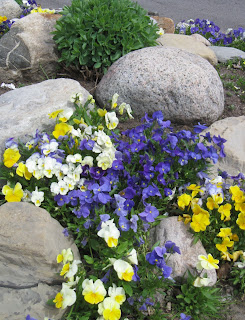Spanish explorers named the new-found part of North America “Pascua Florida”, which means Flowery Easter" or "Flowering Easter”. But it is not only flowering in Florida on Easter, rather all year-round!
Wintertime is never bleak in Florida, even in the North-West, around the “Emerald Coast” and the “Forgotten Coast”, between Pensacola and Apalacicola.
Here are just a couple impressions, photos I took between November and the end of February.
More plants can be found in the lovely botanical gardens in Florida, such as the one in Sarasota, New Smyrna, Pensacola or Clearwater. To visit garden centers is a blast too! They are chockfull of lovely blooms that we can only admire in the North between June and September.
Last but not least it’s interesting to see abundant blooms and shrubs that are growing in the wild, and usually sold for top dollars in Canada and the Northern States.
<><><><><>






















